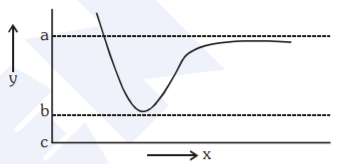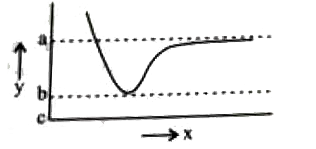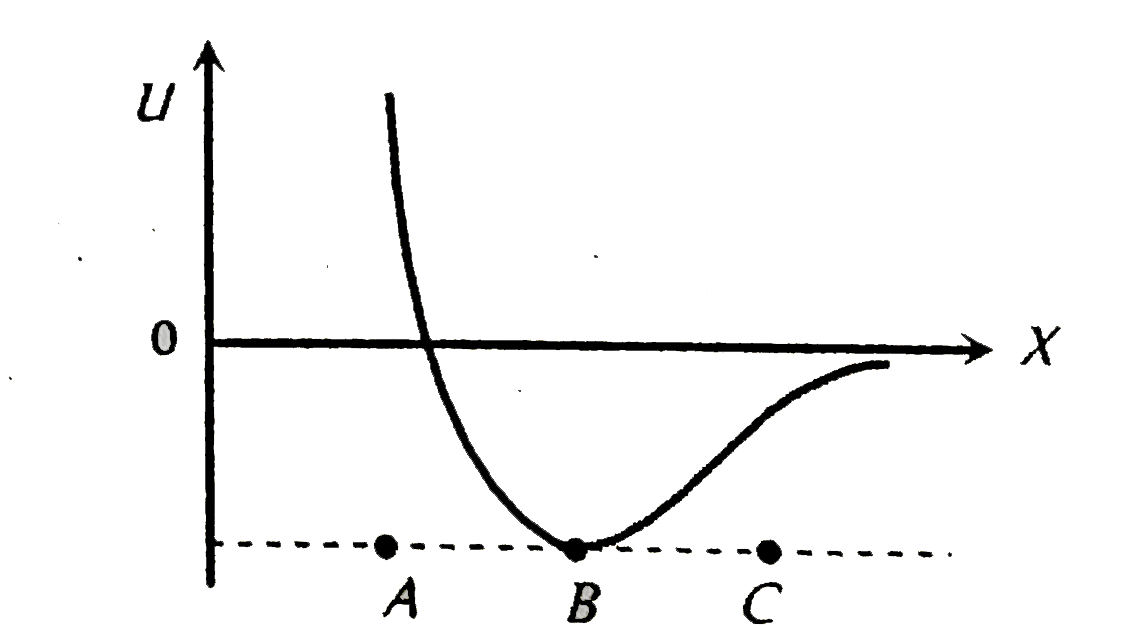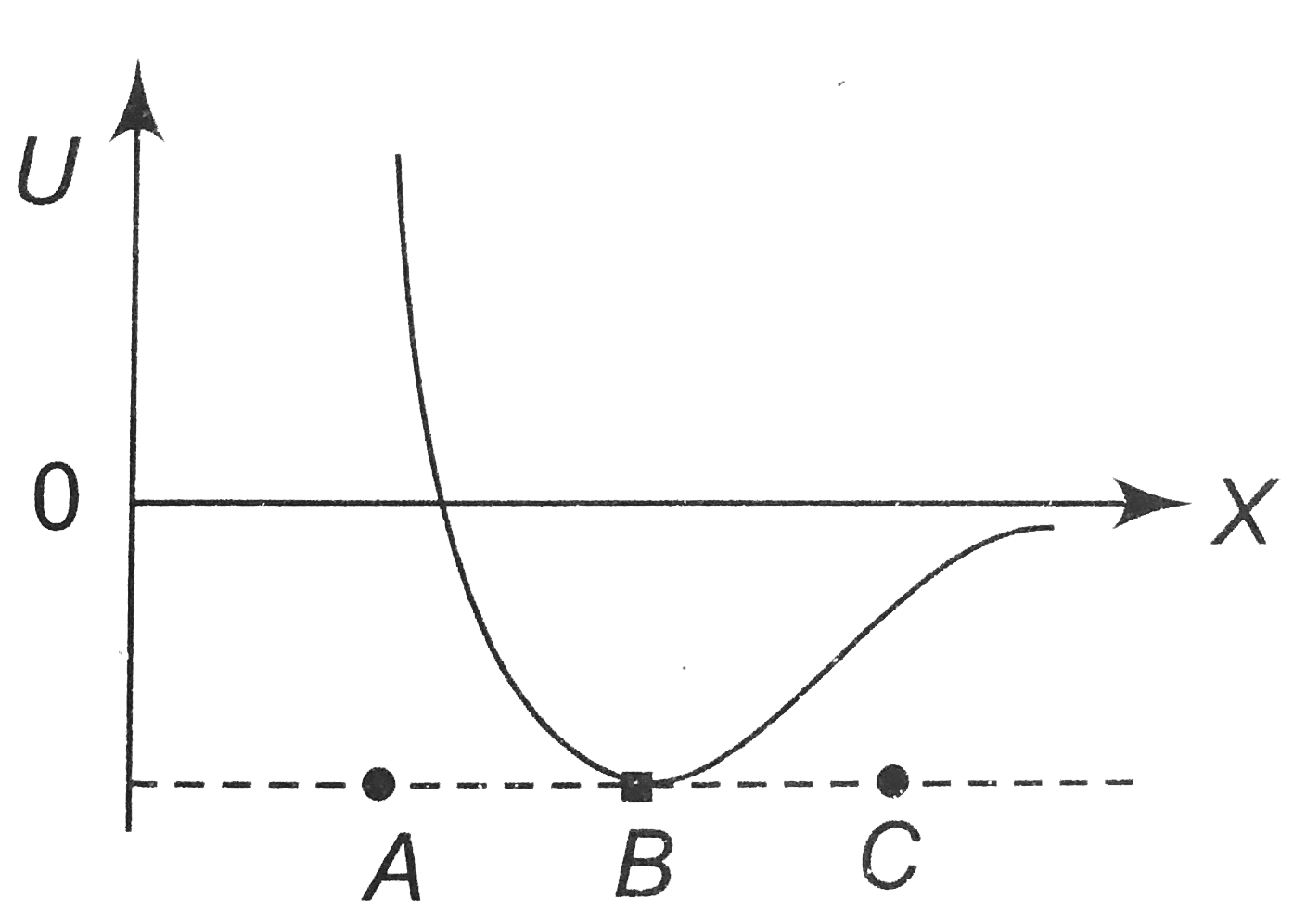In the potential energy curve for the formation of H2 molecule as a function of internuclear distance of H atoms, what happens at the minimum in the curve?
net force of attraction equals to of force repulsion
most stable state of H2 is achieved
system aquires minimum energy
All of these
The correct Answer is:D
To answer the question about what happens at the minimum in the potential energy curve for the formation of the H₂ molecule as a function of the internuclear distance of H atoms, we can follow these steps:
1. Understanding the Potential Energy Curve:
- The potential energy curve represents the potential energy of a system as a function of the distance between two hydrogen atoms as they approach each other to form a molecule.
- As the hydrogen atoms come closer, the potential energy decreases until it reaches a minimum point.
2. Identifying the Minimum Point:
- At the minimum point of the curve, the potential energy is at its lowest. This corresponds to the most stable configuration of the H₂ molecule.
- The distance at which this minimum occurs is known as the bond length.
3. Forces Acting at the Minimum:
- At this minimum point, the attractive forces (due to the formation of the covalent bond) are balanced by the repulsive forces (due to the electron-electron and nucleus-nucleus repulsions).
- Therefore, at the minimum, the net force acting on the hydrogen atoms is zero.
4. Stability of the Molecule:
- The state at the minimum energy is the most stable state for the hydrogen molecule. This means that the molecule is in a configuration where it requires the least energy to maintain its structure.
- If the hydrogen atoms were to move slightly away from this point, they would experience a net force that would pull them back towards the minimum, indicating stability.
5. Conclusion:
- At the minimum of the potential energy curve, the hydrogen molecule is formed, and it is in its most stable state with the net force of attraction equal to the force of repulsion.
Final Answer:
At the minimum in the potential energy curve for the formation of the H₂ molecule, the following occurs:
- The net force of attraction equals the force of repulsion.
- The system achieves its most stable state.
- The molecule is at its bond length, where it has the minimum potential energy.
- The potential energy curve represents the potential energy of a system as a function of the distance between two hydrogen atoms as they approach each other to form a molecule.
- As the hydrogen atoms come closer, the potential energy decreases until it reaches a minimum point.
- At the minimum point of the curve, the potential energy is at its lowest. This corresponds to the most stable configuration of the H₂ molecule.
- The distance at which this minimum occurs is known as the bond length.
- At this minimum point, the attractive forces (due to the formation of the covalent bond) are balanced by the repulsive forces (due to the electron-electron and nucleus-nucleus repulsions).
- Therefore, at the minimum, the net force acting on the hydrogen atoms is zero.
- The state at the minimum energy is the most stable state for the hydrogen molecule. This means that the molecule is in a configuration where it requires the least energy to maintain its structure.
- If the hydrogen atoms were to move slightly away from this point, they would experience a net force that would pull them back towards the minimum, indicating stability.
- At the minimum of the potential energy curve, the hydrogen molecule is formed, and it is in its most stable state with the net force of attraction equal to the force of repulsion.
At the minimum in the potential energy curve for the formation of the H₂ molecule, the following occurs:
- The net force of attraction equals the force of repulsion.
- The system achieves its most stable state.
- The molecule is at its bond length, where it has the minimum potential energy.
Topper's Solved these Questions
Similar Questions
Knowledge Check
In the potential energy curve for the formation of H2 molecule as a function of internuclear distance of H atoms, what happens at the minimum in the curve?
Anet force of attraction equals to of force repulsionBmost stable state of H2 is achievedCsystem aquires minimum energyDAll of theseThe potential energy(y) curve for H2 formation as a function of inrtnuclear distance(x) of the H atoms is shown below

The bond energy of H2 is :A(c−a)2B(b−a)2C(c−a)D(b−a)The potential energy (y) curve for H2 formation as a function of internuclear distance (x) of the H atoms is shown below.

The bond energy of H2 isA(c−a)2B(b−a)2C(c−a)D(b−a)
The potential energy(y) curve for H2 formation as a function of inrtnuclear distance(x) of the H atoms is shown below

The bond energy of H2 is :
View SolutionThese diagrams represent the potential energy U of a diatomic molecule as a function of the inter-atomic distance r. The diagram corresponds to stable molecule found in nature is.
View SolutionThe potential energy curve for interaction between two molecules is shown in figure. Which of the following statements are true?
View SolutionThe potential energy U between two molecules as a function of the distance X between them has been shown in the figure. The two molecules are

View Solution
The potential energy U between two molecules as a function of the distance X between them has been shown in the figure. The two molecules are
View Solution
